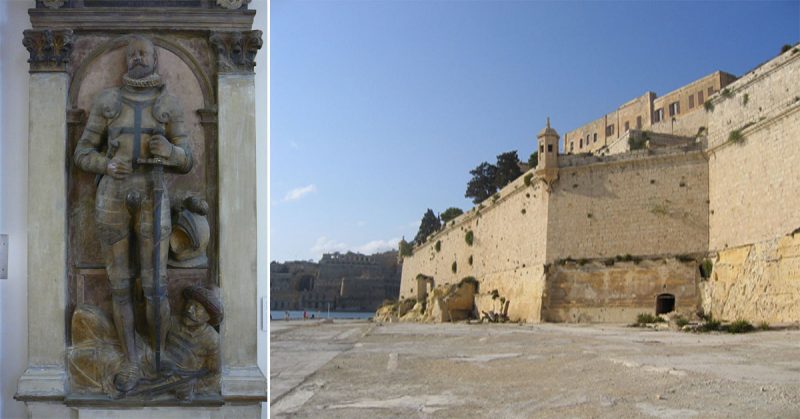In the annals of warfare one reads of the clash of arms, the pitting of warrior against warrior, of tales of heroism, of endurance and martial spirit, and in these records of triumph and defeat, no single episode best exemplifies these qualities than the great siege of Malta in 1565.
In the hellish siege of the strongholds of the Knights Hospitaller that followed the investiture of Malta by the redoubtable forces of Suleiman the Magnificent, a vast armada of war vessels, state of the art artillery and nearly 50, 000 of the Ottoman’s finest troops clashed with the infinitely inferior numerical force of Knights, mercenaries and Maltese inhabitants. The outcome of the conflict was to determine the future of Europe and to add a lustre to the honour of the Knights that clearly showed it to be the preeminent monastic military order of the day.
The origin of the Knights of Saint, or the Knights Hospitaller, lay in a twofold mission i.e. to provide safe passage for Catholic pilgrims to the religious sites of the Holy Land and to provide medical assistance to the sick, the weak and the wounded. In time, the order’s military role became preeminent but the role of caregivers to the sick was never completely eclipsed. With the fall of Jerusalem to Saladin in 1187, the Knights of Saint John relocated to Rhodes.
Here they added to their considerable collective military skills by becoming outstanding seamen and soon they were harassing Moslem shipping in the Mediterranean. This brought upon their heads the full wrath of Sultan Suleiman who invested the island of Rhodes with a large army. The siege of Rhodes ended in the defeat of the Knights but the chivalrous Suleiman spared the lives of his defeated enemy and allowed the Grand Master, Villiers de l’Isle Adam, and all of the surviving Knights and soldiers to depart unharmed. Suleiman was to quickly regret this clemency.
The Knights of Saint John established themselves on the island of Malta, constructed large scale defensive structures, and began once more to harry the fleets of the Grand Turk. Enraged by the implacable enmity of his foes, Suleiman gave orders for resources of men and material to be drawn from all parts of the Ottoman Empire in anticipation of a large-scale military descent upon the island.
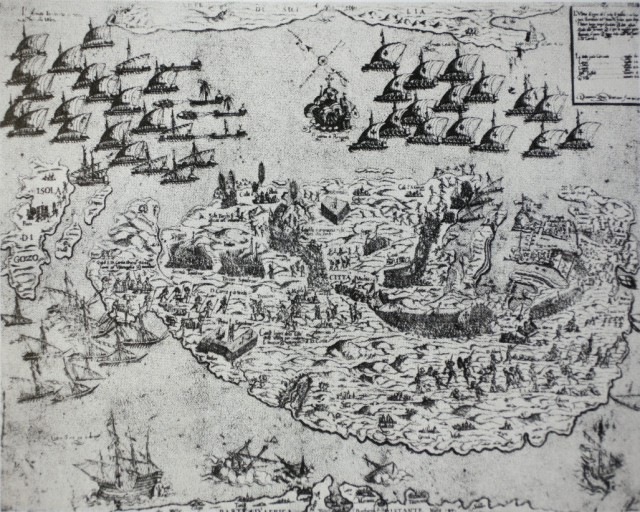
While Suleiman was motivated by sentiments of revenge, he was also fully aware of the strategic value of securing the island of Malta as an outpost of the Ottoman Empire. If Malta fell, so he believed, it would provide the springboard for an invasion of Sicily and then southern Italy and the rest of Europe. To ensure the success of the invasion, Suleiman chose the very best fighting men and leaders that he had at his disposal. Mustapha Pasha was placed in command of the army and the navy was placed under the command of Admiral Piali, leaders who possessed unbroken records of military achievements and who had earned reputations for ruthlessness. One hundred and ninety-three ships were to be used to transport Janissaries, Algerians, Iayalars and Spahis as well as horses for the cavalry, siege guns, muskets, swords, supplies and munitions. The enormous armada set sail on 22nd March, 1565. Across the Mediterranean, the Knights of Saint John, who had been informed by spies regarding the impending assault readied themselves to repel the fierce horde that would be unleashed on them.
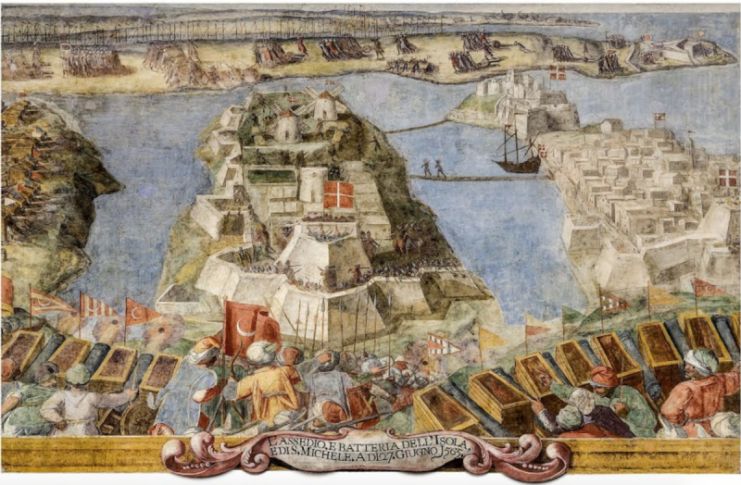
At the head of the Knights of Saint John who stood ready to repel the invading Muslim army was the renowned Grand Master Jean Parisot de Valette. Valette had entered the Order as a youth and had risen through the ranks till, at the age of 62, he was appointed Grand Master of the Order. Valette was a brilliant strategist who was determined to make use of the natural terrain of Malta to his advantage.
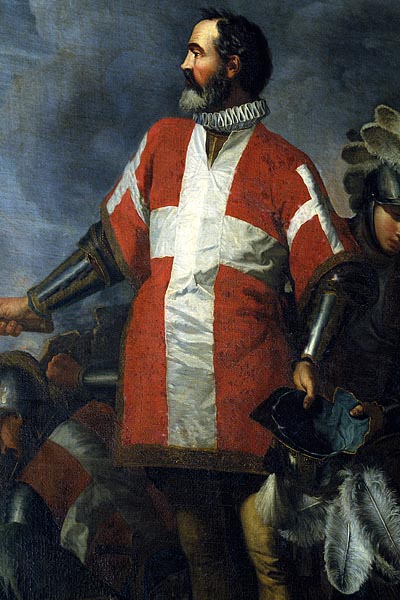
Malta, very much a barren rock in the middle of the Mediterranean, was well suited to provide excellent anchorage for the Order’s galleys and an uncongenial and hostile environment to a besieging army. Given the condition of the island, Valette decided his best strategy would be to avoid the pitfall of meeting the invasion at the beaches and instead to allow the Muslims to debouch upon the island and to force them to take each fortified bastion through long and costly sieges.
In addition, Valette ordered all the Maltese inhabitants to shelter within the castles of the Order and to bring all of the island’s harvest with them. Anything that might sustain the Muslims was destroyed and the wells poisoned. Valette also knew that Malta was an island that was constantly swept by inclement weather and that the first priority of the invading enemy would be to secure a safe anchorage for the sultan’s fleet.
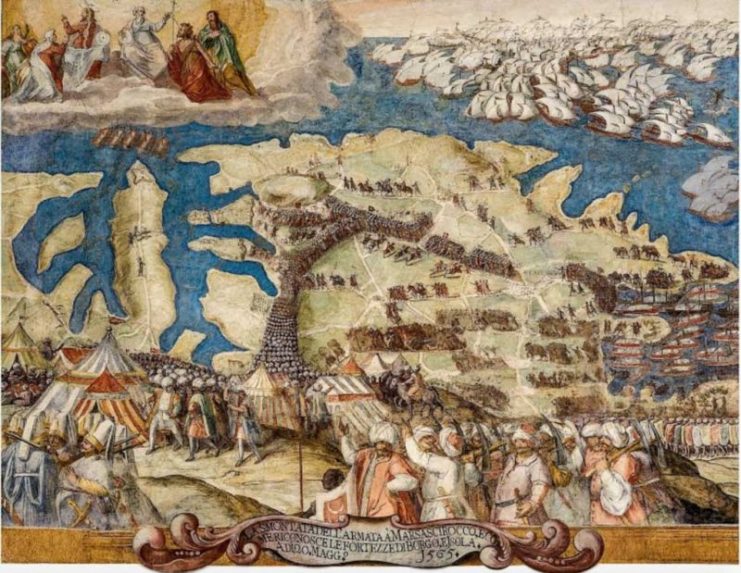
The harbour of Marscumuscetto was an ideal spot for the Muslims to safely anchor their ships and for this reason, Valette strengthened Fort St Elmo which stood at the entrance to the harbour and which Mustapha Pasha and Piali would have to conquer before any further investiture of the island could occur. Thus, because of Valette’s overall strategy of a war of attrition and the Muslim need for safe anchorage, Fort St Elmo was to become the hinge upon which the entire fortune of the Muslim campaign was to turn.
Don Garcia de Toledo, the Spanish viceroy of Sicily, promised to assist the Knights of Saint John as soon as he could muster a relief force sufficient to repel the Turks. In the meantime, members of the Order of Saint John who were stationed throughout Europe began to make their way towards Sicily in the hope of finding passage to Malta and thus being able to assist their brethren against the sultan’s army.
On the 18th May, 1565, the massive Ottoman armada anchored off the coast of the island and the pride of Sultan Suleiman’s great military state disembarked and began to lay siege to Fort St Elmo. The Turks brought up their cannon and emplaced them on the surrounding Mount Scriberras and the northern arm of Marsamuscetto Harbour. At the command of Mustapha Pasha an enormous barrage upon the tiny antiquated star-shaped Fort St Elmo. The bombardment marked the beginning of one of the bloodiest and most hotly contested campaigns the might of the Ottoman Empire had ever encountered.
